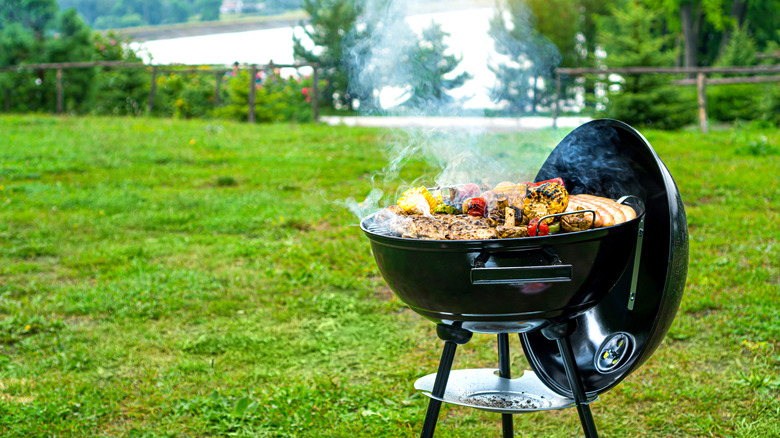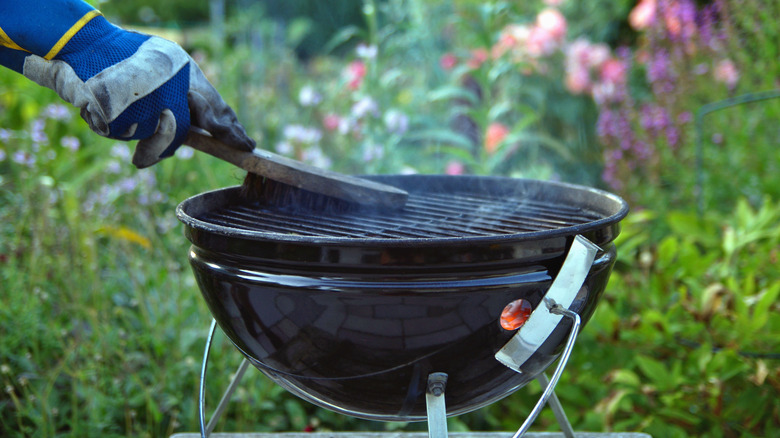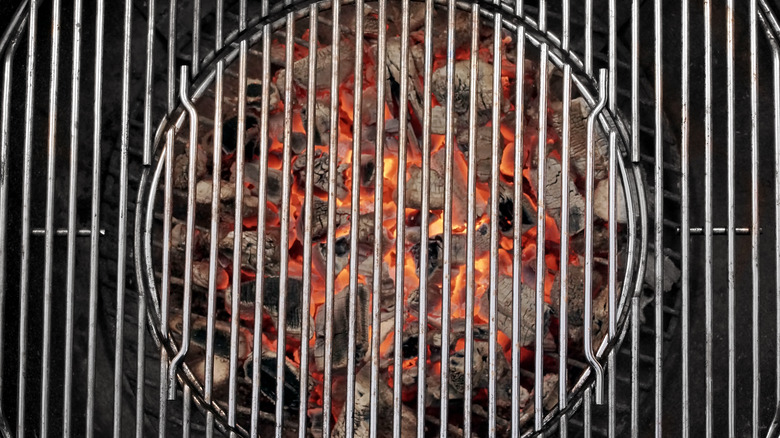There's A Right Way And A Wrong Way To Grill In The Park
It's summertime and the living's easy. Sunny afternoons melt into baseball games, catching some sun, and grilling out in the park -– which can also be easy, but don't get it twisted. There's a right way and a wrong way to grill in a park, and it's your responsibility to familiarize yourself with best practices to keep the park safe and fun for other seasonal grillmasters.
Don't let any tall tales or grilling myths scare you out of tossing a few burgers on the grates at your local park. According to the CDC, temperatures between 145-165 degrees Fahrenheit kill bacteria in food and, via charcoal-grilling giant Kingsford, even low-heat grill fires reach 250 degrees. So, any fears of lingering bacteria on that public grill can be put to rest in a fiery food-safe grave.
Still, nobody wants to taste the last griller's gristle when they bite into that smoky, charred frankfurter. The most important thing about using a public grill the right way is making sure it's clean, and we have some tips on how to do it. But, cooking on a clean grill is only the beginning of grilling the right way this summer. It takes more than some steel wool and elbow grease to have a successful cookout in the park. In fact, grease doesn't belong anywhere near your grill at all.
Keep those grates clean and grease-free
You should keep your burger fat to yourself. According to The Takeout, slapping large amounts of fat onto a sizzling hot grill is a surefire way to start a grease fire -– which is usually accompanied by a less-than-charming cloud of thick, black smoke. Be a conscientious griller and protect your neighbors' cookout.
For grates that sparkle (or aren't streaked with the remnants of yesterday's barbecue), The Kitchn recommends using a grill brush or a wadded-up piece of aluminum foil to scrape off any food debris. To get rid of any ashes left in the bottom of the grill, it suggests sticking your hand inside of a plastic grocery bag and scooping them out by the handful. The same is true for after you've finished your cookout. Once the grates have cooled, be sure to scrape them clean as a courtesy to the next griller who comes along.
Only you can prevent wildfires
In the culinary world, folks often talk about the importance of getting the cooktop hot enough for achieving the perfect taste. But when it comes to public grilling, making sure the cooktop is cold enough afterward is equally as important –- if not more so. From 2014-2018, grills, hibachis, and barbecues were responsible for over 10,000 home fires per year in the U.S., reports The National Fire Protection Association, including 4,900 structure fires and 5,700 outside fires. You might be in a hurry to catch the first pitch after your afternoon barbecue, but stick around long enough to make sure you've done your part in making the park a safe place for others.
For grillers at home, the authorities at Char-Broil recommend leaving charcoal in the grill for 48 hours to ensure it cools completely. However, if you're using a public grill or transporting yours home from the park, this waiting period is likely not an option. Weldon Dent, Texas A&M Forest Service specialist, says grillers should carefully drown their hot coals in water and stir to make sure all the ashes are thoroughly doused. Carefully assess the coals' temperature with the back of your hand, and continue dowsing and stirring until no heat remains. As Smokey the Bear says, "If it's too hot to touch, it's too hot to leave."


